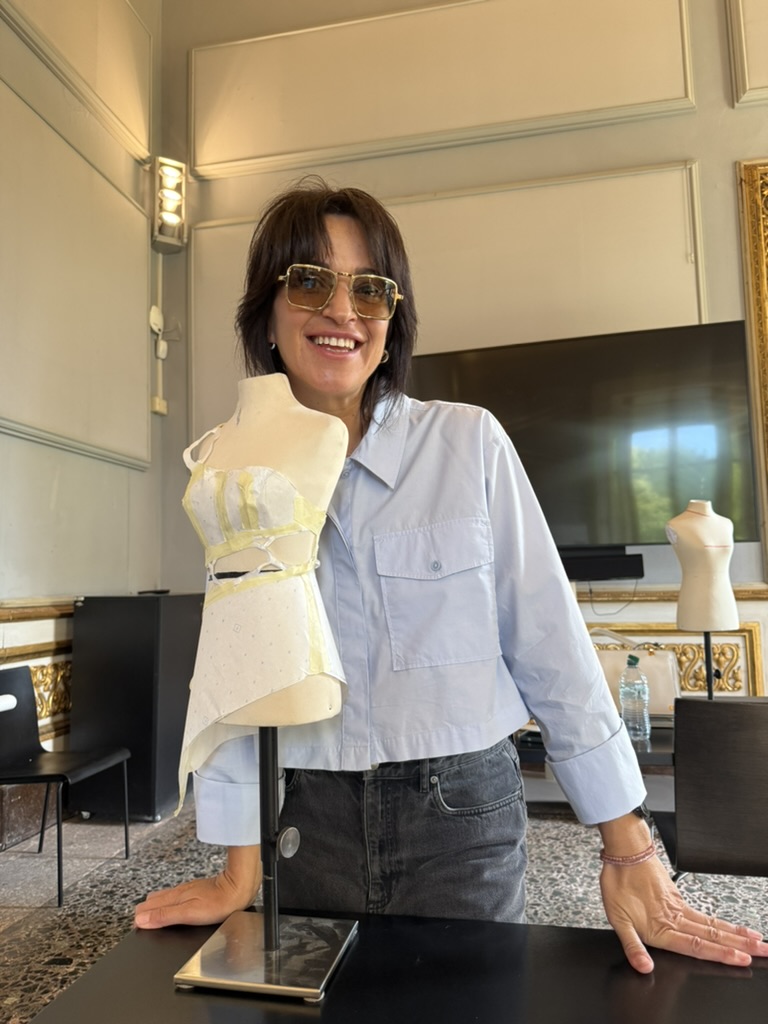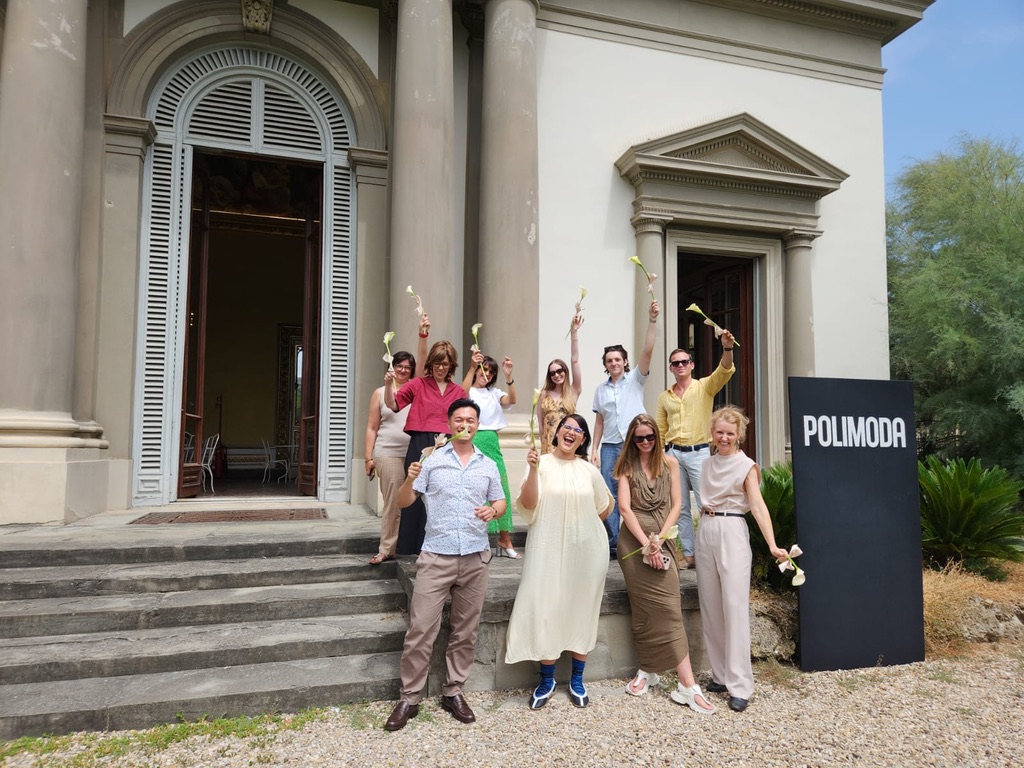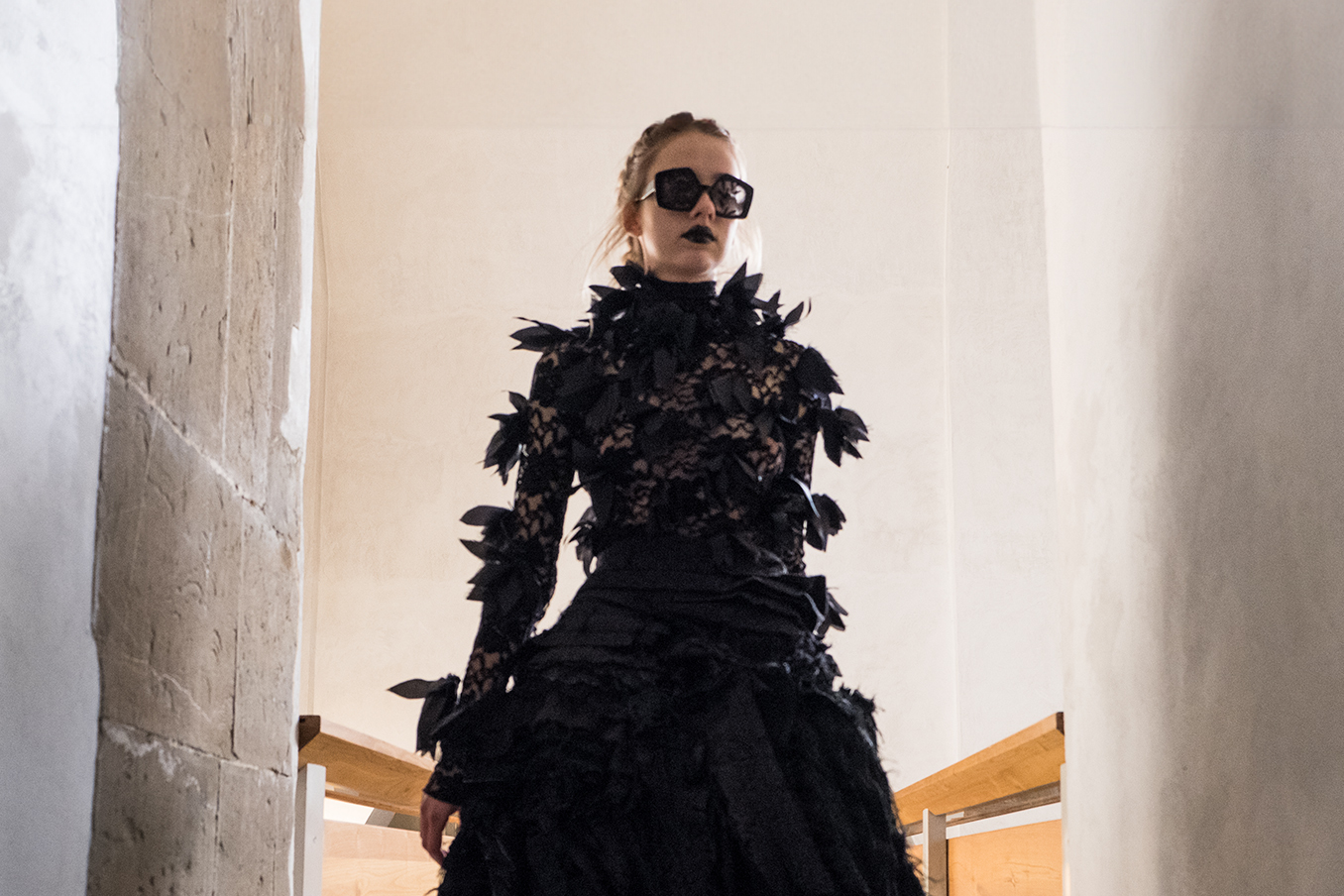Stephanie Slobodian shares how the short course in Eyewear Design laid the groundwork for launching her own eyewear brand, expanded her understanding of smart eyewear adoption challenges, and sparked a creative shift that redirected her professional path.
As a UX Designer working in the Tech industry, AI has introduced significant unknowns into my current profession, sparking a need for me to learn new skills and explore a potential pivot or addition to her career. I was hoping to find a path that allowed me to merge my existing UX knowledge with a new creative endeavor, possibly at the intersection of UX and smart eyewear, or even by one day launching my own collection. This month-long program allowed me to explore this passion and prepare for a changing professional landscape without leaving my current job.
What I didn’t expect was that the lessons from Polimoda would extend far beyond eyewear design. I now look at objects not just as forms, but as a confluence of materials, history, and human expression. I learned the power of the tangible, the joy of creating something physical that exists in the world, on a face, telling a story. Most importantly, I learned to embrace the iterative process of designing not just products, but one’s own life path.
HEATWAVES AND NEW FRIENDS
On my first official day at Polimoda in beautiful Florence, temperatures soared to 40°C, and along with being one of the hottest days I’ve experienced, it turned out to be a profound creative and personal turning point. It was so much more than just a new place; it was the start of a fundamental shift, a journey to live a more focused creative life.
Stepping into this new world was both exhilarating and incredibly humbling. We were six students from all over the world: Canada, USA, Brazil, Germany, Australia, and Mexico. All so different, yet we shared this one quirky passion—eyewear! I now consider my classmates friends for life and look forward to seeing them again soon.
NEW WORLDS
Despite being a self-proclaimed superfan of eyewear and thinking I knew more than the average person, I was so excited to be exposed to a whole new world. This profound revelation first became evident in our Materials class, where our teacher Barbara Guglielmi, Senior Product Development at Mazzucchelli, taught us about the different methods of acetate creation. It was a moment of enlightenment, illustrating the intricate depth and artistry behind something I had admired with curiosity but never understood. I had never considered the rich (Italian!) history of this material or how it could be manipulated into something that was both durable and beautiful.
Barbara showed us how massive blocks of multi-colored acetate are crafted, and how they are cut, shaped, and then polished to a deep, lustrous shine. Exploring this world reshaped my entire perception of creation and craftsmanship. It made me realize how beauty and creativity could be found in the foundational elements that come together to make eyewear. This class was a powerful reminder that every product, no matter how simple it seems, holds a rich history and a story of ingenuity.
THE ART OF SEEING
In our Eyewear Design class, we first started by identifying the attributes of a collection, and then we began to look for inspiration. Monica Albanese, co-owner of ICONAOCCHIALI visione and Teacher, taught us to look at shapes and color, and think about how they made us feel. How could we interpret that into our sketches? Sketching came easy for some and was a real challenge for others. My minor in college was illustration, and I felt like I was happily reunited with an old friend. For others in our class who were having a hard time loosening up and experiencing the flow of sketching, our teacher suggested dance to get them feeling more fluid in their sketching. We laughed a lot that day, it was so much fun!
Monica also owns several eyewear shops, and I was keen to understand her experiences in both designing eyewear and learning the pain points of customers. I was fascinated to hear that working with a skilled manufacturer can result in a big, chunky frame feeling weightless on your face if properly balanced on the bridge of the nose and tops of the ears. She also explained that considerations like frames that are too high will hit the top of the cheeks and how different face shapes can affect how frames fit on the nose. Her insights were invaluable, reinforcing that a great design is not just about aesthetics—it’s about a perfect blend of form, function, and comfort. It’s UX for eyewear!

DESIGNING BEYOND GENDER AND TRENDS
While attending Trends class, Teacher and Fashion Trend Forecaster Polina Stepanova encouraged me to explore genderless design for my collection’s exploration of smart eyewear that would appeal to the masses. Her incredibly relevant feedback and a curated list of designers and social media accounts inspired me to create the very design principles for my collection, Drift. We learned the attributes of trends and what could influence designers. This class was fascinating to me, and I very much looked forward to Polina’s lectures.
My goal was to achieve universal appeal by balancing strong, precise geometry with a sense of fluidity. I wanted to create designs where masculine people would see the shapes, textures, and colors that appeal to them, and the same for feminine customers. This learned approach helped me make decisions in my final designs and materials by grounding them in past inspiration to create a collection that would appeal to my future customers.
This concept I called “geometry unbound” and consisted of releasing stereotypes from the past that dictated separate frames for different genders. This became a cornerstone of my design philosophy. I believe that true luxury in products, whether they are smart eyewear or a designer chair, is found in a design that is both bold and universally appealing. This requires a masterful use of geometry, creating forms that balance traditionally masculine qualities like strength and precision with feminine qualities such as fluidity and elegance. My approach was to focus on a bold silhouette, select premium and special materials, and use a color palette that breaks stereotypical connections to enhance the product’s function and timelessness, rather than relying on fleeting trends.
WHEN PENCIL MEETS COMPUTER SCREEN
Another pivotal class was 3D Modeling in Rhino, led by Designer and Teacher Nicola Bernardi. Though I have a background in 3D animation and work in tech every day, this powerful part of the course challenged me in unexpected ways. Nicola guided us through the fundamentals, from building eyewear shapes using a few different methods to applying materials, creating lighting, and even adding a bit of motion. We learned how to render our creations for illustrative purposes, but the real takeaway was a desire to continue my studies with the program.
The class inspired me to get a 3D printer so I can create physical prototypes of my eyewear collection to test for fit and comfort. Seeing our designs rendered in a virtual space was amazing, but I believe the true test of a good design is holding it in your hands. This technology will allow me to bring my creations to life, to iterate on a design, and to ensure that the final product feels as good as it looks.
WHAT I LEARNED AND WHAT I'M DOING NOW
Now I’m taking everything I learned at Polimoda and turning it into something real. My blog, thisframeworks.com, is now becoming a curated eyewear design shop! It’s a place where I can put all those design principles, my exuberant creativity, and business strategies into practice. I’m also diving headfirst into the eyewear business from every angle by buying and selling frames at a lens shop and designing a pop-up shop to partner with local businesses around Los Angeles. It’s my crash course in the industry, and I want to learn every last detail before I one day launch my own collection.

At the same time, the allure of smart eyewear still pulls me. I’ve been testing out different products, and I feel like I’ve gained a unique perspective on why some have struggled to catch on. I can see the barriers to adoption and have ideas about how to make the interactions and ecosystems truly work for people. My journey now is all about connecting with as many people in this industry as I can, with the hope of one day working at the exciting intersection of UX and smart eyewear.
Polimoda wasn’t just a school; it was the crucible where I forged a new understanding of design and, more importantly, a clearer vision for my future. It taught me that the most complex and rewarding design problem is the one we turn inward, the one that asks, “what is the next chapter of my story?” I walked away with a profound creative shift and the kind of clarity that feels like true 20/20 vision for the path ahead. Take it from me: the biggest risk isn’t trying something new – it’s staying exactly where you are.
CREDITS
Written by:
- Stephanie Slobodian, UX Designer and Eyewear Design Short Course student
Cover image:
- Collection by Sofia Sapena, Undergraduate in Fashion Design alumna. Sunglasses designed by Sofia Sapena and hand made by Herian. Photo by Marco Gualtieri.

